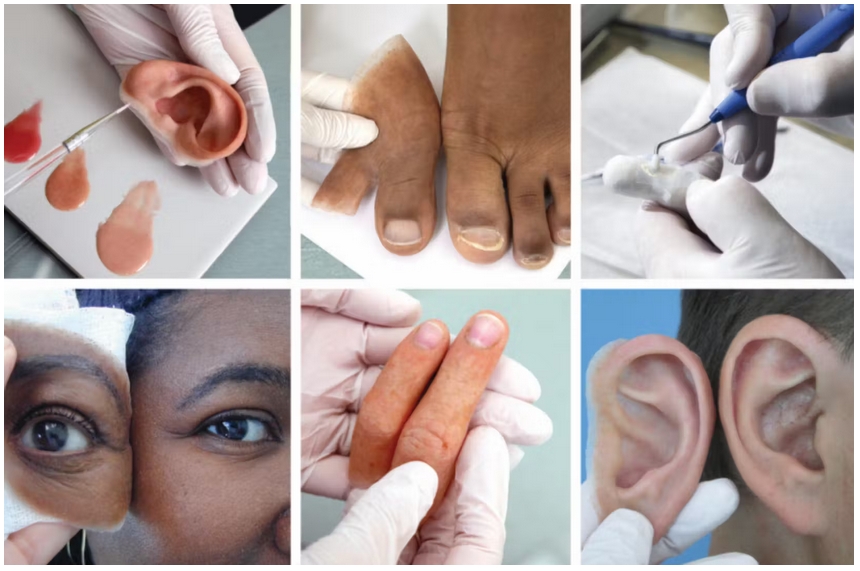
One of the most fascinating applications of silicone in prosthetic makeup is in the creation of special effects, such as wounds, scars, and burns. The flexibility of silicone allows for the crafting of incredibly lifelike injuries. When tinted to match the wearer's skin tone, the results are truly astonishing. Silicone's ability to mimic the texture and color of human skin adds an extra layer of realism to Halloween makeup, making your gory wounds and gruesome scars all the more convincing.
Silicone prosthetics showcase a fascinating duality, as they can simultaneously craft realistic disasters in the realm of makeup effects, while also offering life-changing adaptations in the field of medicine. In the world of special effects and Halloween makeup, silicone's ability to mimic gruesome injuries and deformities is astounding, creating chillingly realistic disasters for theatrical purposes. However, this very same material serves a profoundly humanitarian role in medicine, where it enables the creation of lifelike adaptations, such as nose transplants and prosthetic limbs, that restore not only the physical appearance but also the self-esteem and quality of life for individuals in need. The versatility of silicone reminds us of the beauty in both its artistic and life-enhancing applications.
In the medical industry, silicone prosthetics have seen remarkable growth and advancements in recent years. These prosthetic devices, designed to replace or enhance lost or damaged body parts, have benefited from the unique properties of silicone, such as its flexibility and biocompatibility. Silicone prosthetics have made significant strides in improving the quality of life for amputees, burn victims, and individuals with congenital limb differences. With continuous research and innovation, these prosthetics are becoming increasingly lifelike, comfortable, and functional. They are now equipped with advanced features like myoelectric sensors, allowing users to control the prosthetic limb with greater precision and ease. As technology and materials continue to evolve, the future holds the promise of even more lifelike and functional silicone prosthetics, helping individuals regain both physical ability and confidence in their daily lives.
While the prosthetic makeup industry and the medical field may appear disconnected, their common thread lies in the strikingly lifelike properties of the silicone materials employed in both domains. As silicone finds its way into prosthetic makeup, it not only elevates the realism of special effects and character transformations but also contributes to the comfort and durability of these creations.
This innovative use of silicone, coupled with its growth and advancements in the medical industry, points towards an exciting future for this material. The ability of silicone to adapt and mimic the human body's characteristics makes it a promising candidate for crafting prosthetic limbs, skin grafts, and medical implants. In this convergence of silicone's artistic and medical applications, we may very well be witnessing the future of this remarkable material—blurring the lines between imagination and reality, and ultimately improving lives in countless ways, whether it's on the spooky streets of Halloween or within the life-changing realm of medicine.
link:https://www.silicone-expoeurope.com/blog/from-fantasy-to-functionality-the-silicone-prosthetics-evolution
